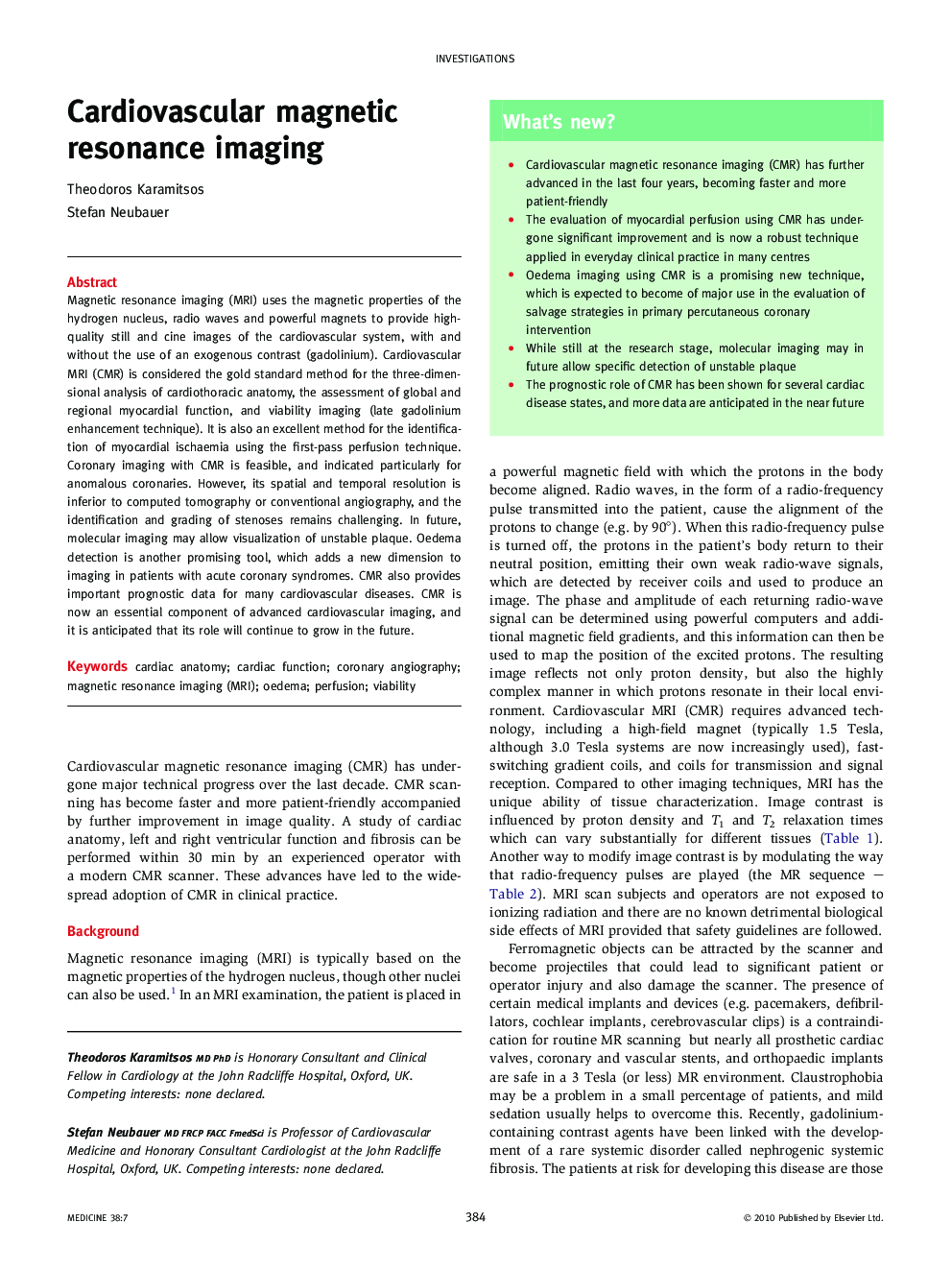| Article ID | Journal | Published Year | Pages | File Type |
|---|---|---|---|---|
| 3805168 | Medicine | 2010 | 6 Pages |
Magnetic resonance imaging (MRI) uses the magnetic properties of the hydrogen nucleus, radio waves and powerful magnets to provide high-quality still and cine images of the cardiovascular system, with and without the use of an exogenous contrast (gadolinium). Cardiovascular MRI (CMR) is considered the gold standard method for the three-dimensional analysis of cardiothoracic anatomy, the assessment of global and regional myocardial function, and viability imaging (late gadolinium enhancement technique). It is also an excellent method for the identification of myocardial ischaemia using the first-pass perfusion technique. Coronary imaging with CMR is feasible, and indicated particularly for anomalous coronaries. However, its spatial and temporal resolution is inferior to computed tomography or conventional angiography, and the identification and grading of stenoses remains challenging. In future, molecular imaging may allow visualization of unstable plaque. Oedema detection is another promising tool, which adds a new dimension to imaging in patients with acute coronary syndromes. CMR also provides important prognostic data for many cardiovascular diseases. CMR is now an essential component of advanced cardiovascular imaging, and it is anticipated that its role will continue to grow in the future.
